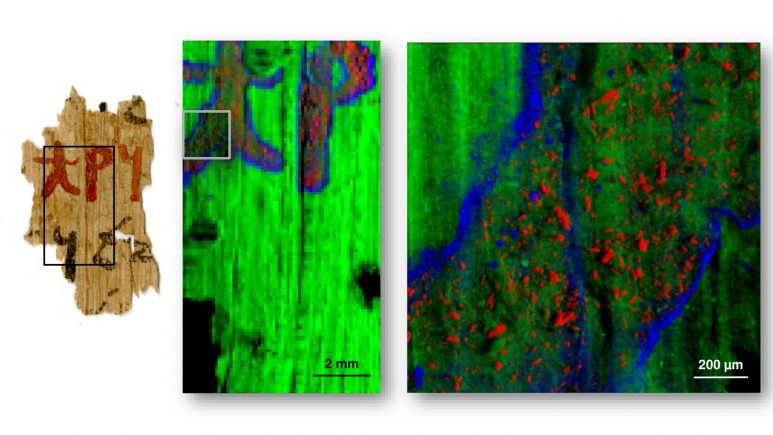A New Perspective on Ink Composition Reveals More About Ancient Egyptian Writing Practices
Ancient Egyptians used black ink for writing the main body of text, while red ink was often used to highlight headings, instructions, or keywords. Research into the composition of ink has transformed ideas around Ancient Egyptian writing practices. Conducted by scientists led by the European Synchrotron Radiation Facility (ESRF) in Grenoble, France and the University of Copenhagen, in Denmark, the research centered on the exact composition of red and black inks in ancient Egyptian papyri circa 100-200 AD.
During the last decade, the history of ink in the ancient world has been under renewed scrutiny, particularly through artifacts from ancient Egypt and other ancient cultures such as Greece or Rome.
The analysis used the powerful X-rays of the ESRF to study the red and black ink in papyri from the only large-scale institutional library known to have survived from ancient Egypt: the Tebtunis Temple Library.
The study included as many as twelve exceptional examples of ancient Egyptian papyrus fragments, all inscribed with red and black inks. It revealed that lead was probably used as a dryer rather than as a pigment. This technique would return thousands of years later, seeing extensive use in 15th century Europe during the re-discovery of oil painting during the Renaissance.
“Something very striking was that we found that lead was added to the ink mixture, not as a dye, but as a dryer of the ink, so that the ink would stay on the papyrus,” says Cotte. The researchers came to this conclusion because they did not find any other type of lead, like lead white or minimum, which should be present if lead was used as a pigment. “The fact that the lead was not added as a pigment but as a dryer infers that the ink had quite a complex recipe and could not be made by just anyone,” adds Thomas Christiansen, Egyptologist from the University of Copenhagen and co-corresponding author.
Explore full details of the scientific findings and investigation techniques on Sci Tech Daily. View the full paper here: Insights into the composition of ancient Egyptian red and black inks on papyri achieved by synchrotron-based microanalyses
Please Support us on Patreon!
 The minimum level of contribution is only $1 per month.
The minimum level of contribution is only $1 per month.
Moreover, starting with the pledge level of $3, you will get a digitized vintage book about bookbinding, book history, or book arts each month from us!
These pledges help iBookBinding to continue its work and bring more information about bookbinding and book arts to you!


